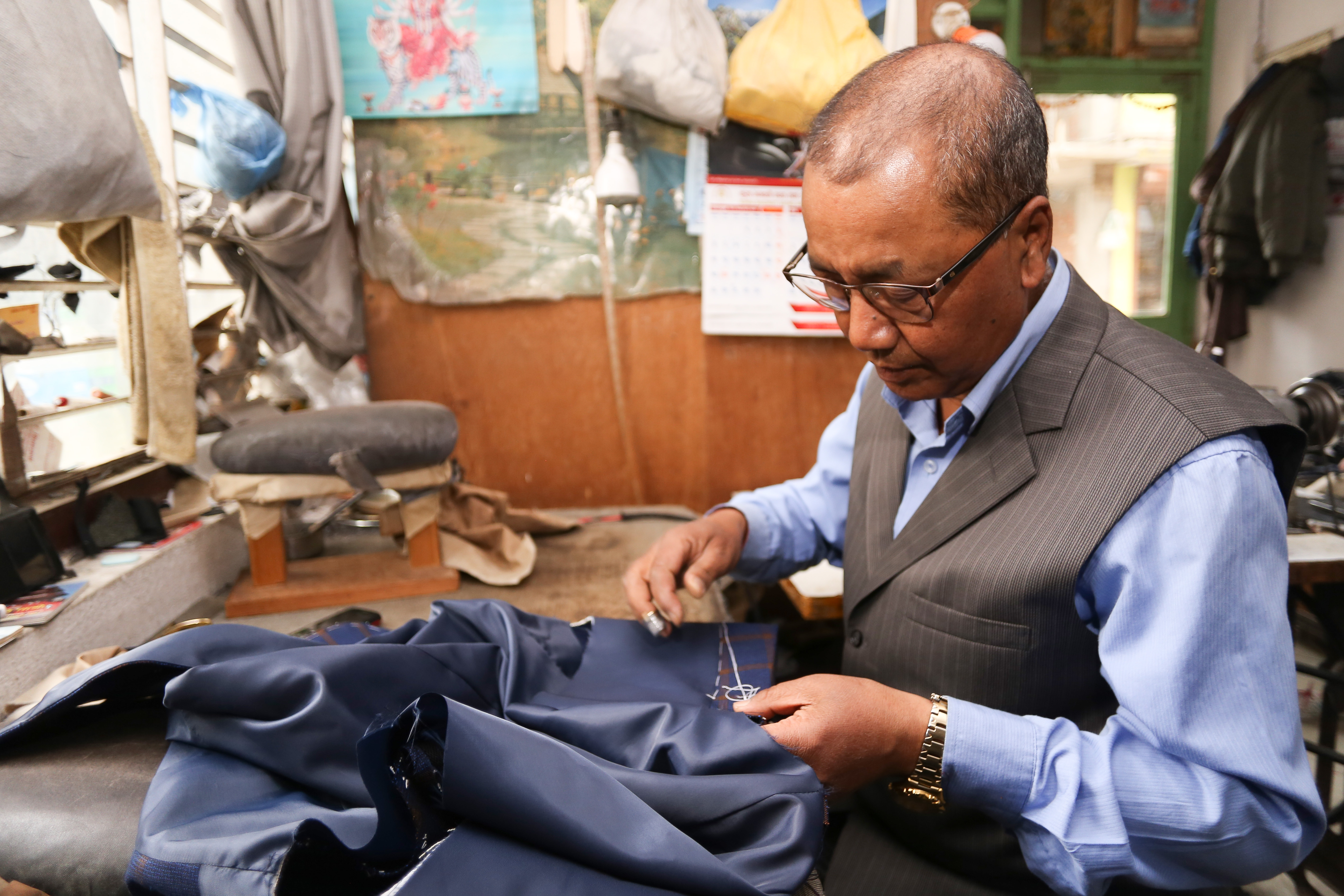Tailor Perth Specialists: Tailor-Made Solutions for Elegant Clothing
Tailor Perth Specialists: Tailor-Made Solutions for Elegant Clothing
Blog Article
Recognizing the Tailoring Process: From Material Choice to Final Fitting for the Suitable Wardrobe
The tailoring procedure is an intricate interaction of art and scientific research, beginning with the important decision of fabric option and finishing in the exact modifications of final fittings. Each textile kind brings distinct high qualities that influence not just the visual charm however also the garment's longevity and viability for numerous events. Understanding the nuances of customizing strategies can raise one's wardrobe to unmatched levels of class. As we check out these elements additionally, one should consider how also the smallest details can significantly influence the general end result of one's individual style.
Significance of Textile Selection
Selecting the right fabric is critical in the tailoring procedure, as it straight influences the convenience, sturdiness, and total aesthetic of the final garment (tailor perth). The choice of material sets the foundation for the garment's efficiency, capability, and design. Various fabrics possess special properties, such as breathability, weight, and stretch, which can significantly impact exactly how the garment drapes and fits the body
Furthermore, material option impacts the garment's durability and simplicity of treatment. High-grade textiles can hold up against deterioration, maintaining their appearance and framework in time, while lower-quality materials may lead to pilling or fading. Additionally, the right fabric adds to the garment's capacity to shift across seasons and occasions, thus improving flexibility.
A tailored piece made from an appropriate textile not just showcases workmanship yet likewise raises the wearer's confidence. Comprehending the nuances of material choice is vital for any type of customizing undertaking. It ensures that the final product not only satisfies the aesthetic wishes of the client however also straightens with functional needs, consequently achieving an unified balance between kind and function in the customized wardrobe.
Sorts Of Fabrics and Their Uses
Recognizing the various kinds of fabrics readily available is important for making educated decisions throughout the tailoring procedure. Each material possesses unique features that dictate its suitability for particular garments and occasions.
Its convenience allows it to be tailored into whatever from tee shirts to outfits. Its all-natural elasticity helps garments maintain shape over time.
Silk emanates deluxe and is light-weight, making it perfect for eveningwear and delicate blouses; however, it needs cautious handling as a result of its delicacy. Bed linen, with its distinctive coating, is a preferred selection for warm climates, providing a airy and crisp feel, however it wrinkles quickly, which might influence the garment's look.
Artificial textiles, such as polyester and nylon, deal resilience and resistance to wrinkles, making them suitable for everyday wear and active clothing. Understanding these textile kinds and their properties allows for far better decision-making, ensuring that each customized item not only fits well however also aligns with the desired objective and celebration.
The Tailoring Strategies Clarified
The art of customizing counts on a selection of strategies that transform fabric into well-fitted garments. Central to this process is pattern composing, where a dressmaker produces themes based on the customer's dimensions and desired design. This initial action makes certain that the garment will certainly fit the user properly prior to any type of cutting takes place.
When patterns are established, reducing methods enter into play. Accuracy is critical as inaccuracies can bring about misfitting garments. Tailors usually use various reducing methods, such as single-layer reducing for elaborate designs and multiple-layer reducing for efficiency on conventional patterns.
Basting is another crucial method, allowing dressmakers to momentarily sew fabric items with each other for a preliminary installation. This approach uses the opportunity to assess the drape and total silhouette prior to last go to my blog stitching.
Seaming techniques, consisting of french seams and flat-felled joints, enhance the garment's resilience and visual charm. Tailors also use techniques such as interfacing and padding to give structure and form to specific areas, like shoulders and collars.
Lastly, completing strategies, including hemming and edge ending up, ensure the garment's durability while giving a polished look. With each other, these techniques develop the foundation of reliable tailoring, leading to beautiful, tailor-made apparel.
Fitting Modifications and Considerations

Trick factors to consider include the shoulder fit, which ought to neither sag neither limit motion, and the sleeve length, which need to permit for comfy arm motion while maintaining a sleek appearance. Furthermore, modifications at the waist can refine the shape, with alternatives to let out or take in textile as required.
The increase of trousers is an additional critical element; it ought to sit pleasantly above the hips without triggering pain, enabling convenience of movement. Hemming lengths for both pants and skirts ought to reflect the wearer's preferred style while respecting proportions.

Preserving Your Tailored Apparel
Proper maintenance of customized garments is necessary to protecting their fit and look with time. To ensure durability, routine cleansing is extremely important. Always comply with the treatment tag directions, which may recommend completely dry cleaning for delicate fabrics or device washing for even more sturdy products. Stay clear of regular laundering, as this can put on down the fabric and modify the garment's form.
Storage space is equally essential; use cushioned wall mounts for jackets pop over to this site and layers to keep shoulder framework, and store trousers folded up nicely or hung to avoid creasing. Secure garments from direct sunshine, which can discolor colors and damages fibers.
In addition, regular evaluations for small repair services can stop larger concerns. Examine for loose switches, tearing seams, or indicators of moth damage, dealing with these troubles immediately to preserve the garment's integrity.
Last but not least, think about seasonal rotation. Putting on tailored items in small amounts allows textiles to recuperate, extending their life-span. By carrying out these maintenance approaches, you can make sure that your tailored garments continue to be as excellent as the day you first wore them, boosting your ideal closet for many years to find.
Final Thought
The customizing process, including material option, knowledgeable strategies, and precise suitable modifications, plays a crucial function in developing garments that enhance both convenience and design. Each stage adds to the total effectiveness of the last item, guaranteeing that apparel not only fits well however additionally reflects private identification. Recognizing the value of upkeep extends the life of tailored garments, strengthening their value in a well-curated closet. A comprehensive strategy to customizing finishes in a certain and refined look.
Choosing the right fabric is important in the tailoring process, as it directly influences the comfort, durability, and overall visual of the last garment. The option of textile establishes the structure for the garment's efficiency, performance, and design. Various materials have special homes, such as weight, stretch, and breathability, which can significantly influence just how the garment drapes and fits the body.
The art of tailoring relies on a range of techniques that transform material into well-fitted garments.The tailoring process, incorporating material selection, experienced techniques, and exact fitting changes, plays a vital role in developing garments that enhance both convenience and style.
Report this page